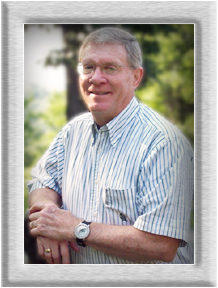 by
Richard
Haynes
Missouri,
U.S.A.
by
Richard
Haynes
Missouri,
U.S.A.

A
few days ago, in order to test my homemade polarizing filter system, I
made a few quick slides of various crystals. Yeah, I know, I shouldn't
just put a couple of water drops on a slide, add a bit of chemical to
the water, stir, then place the slide under an infrared heat lamp to
rapidly dry it. But I did. A press of other matters caused me to rush
this little task. Even so, it turned out to be fun because I came back
to it later and spent time with it. Why? Well, my cut-by-hand
polarizing filters worked very well and I
made a few photos that were reasonable. One of the chemicals I had
pulled from my shelves for the test was potassium acetate. Not thinking
everything through in my initial efforts, I had forgotten that this
white crystalline powder is, as are many chemicals, a "little"
hygroscopic, i.e., it picks up atmospheric water rather easily. And,
fast drying the chemical solution under a heat lamp seems to speed up
the process.
My first look at the potassium acetate slide under polarized light
showed beautiful, regular rows of soft, fluffy crystals, almost like
feathers on a bird. However, when I left the microscope for a few
minutes and returned to see nothing but black (polarization extinction)
no matter how I shifted the slide, I was puzzled. Then,
remembering a tad of basic chemistry, I removed the slide to find the
water droplet. I had been looking through a (now) clear solution of
potassium acetate. Duhh! But,
what I had seen prompted me to look again another day.
So, I spent sufficient time to make photomicrographs of polarized
potassium
acetate. I attempted to create a moment by moment look at the
deliquescence
(water pick up) phenomenon. It required some quick footwork between the
heat lamp and the microscope followed by rapid
microscope and camera settings (I have no hot stage) to get the slides
to the stage and photographed. After a number of
failures, I developed a procedure that worked for me. The pictures
below are my results at 40X.


Fig. 1 The first soft rows of
crystals
Fig. 2 Crystals
look almost like an ice wall


Fig. 3 A different area
of the "ice wall"
Fig. 4 Black areas hint at
solubilization


Fig. 5 The beauty of
polarization
Fig.
6 30 seconds later black areas spread
Now, the deliquescence process has begun take over the slide.
Seconds after figure 6, we see major changes occurring.


Fig. 7 Canyons
are being carved
Fig. 8 A
slight slide shift reveals "badlands"
From this point on, I was shifting the slide, checking the camera and
snapping as quickly as possible. Deliquescence was taking over very
rapidly. It was as though I was viewing the breakup of a continent.


Fig. 9 Deep
erosion
Fig. 10 Small pieces are floating
The last two photos: deliquescence is in total control


Fig. 11 A mass of swirling
bits
Fig. 12 The last intact pieces on the slide
And after figure 12 photo was taken, there was left only a tiny pool of
water on the slide. Deliquescence has triumphed.
For once, a mistake of mine (and there are many) seems in the end, to
have turned out okay. Looking back, I'm glad I was in a hurry.
Equipment: Nikon
Eclipse E200 trinocular microscope with Qioptiq digital coupler and
Nikon CP 4500 digital camera. Photoshop® 7.0
I am interested to hear from Micscape readers and all comments are
welcome.
Microscopy UK Front Page
Micscape Magazine
Article
Library
© Microscopy UK or their contributors.
Published in the November 2006 edition of
Micscape.
Please report any Web problems or offer general comments to
the
Micscape
Editor
.
Micscape is the on-line monthly magazine of the Microscopy
UK web site at
Microscopy-UK
© Onview.net Ltd, Microscopy-UK, and all contributors 1995
onwards. All rights reserved.
Main site is
at www.microscopy-uk.org.uk
with full mirror
at www.microscopy-uk.net
.













